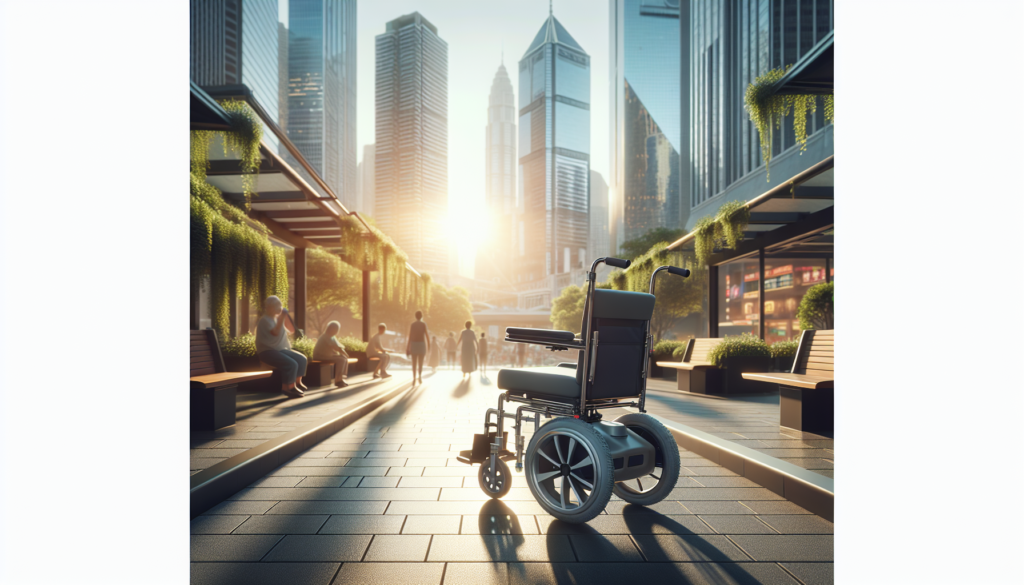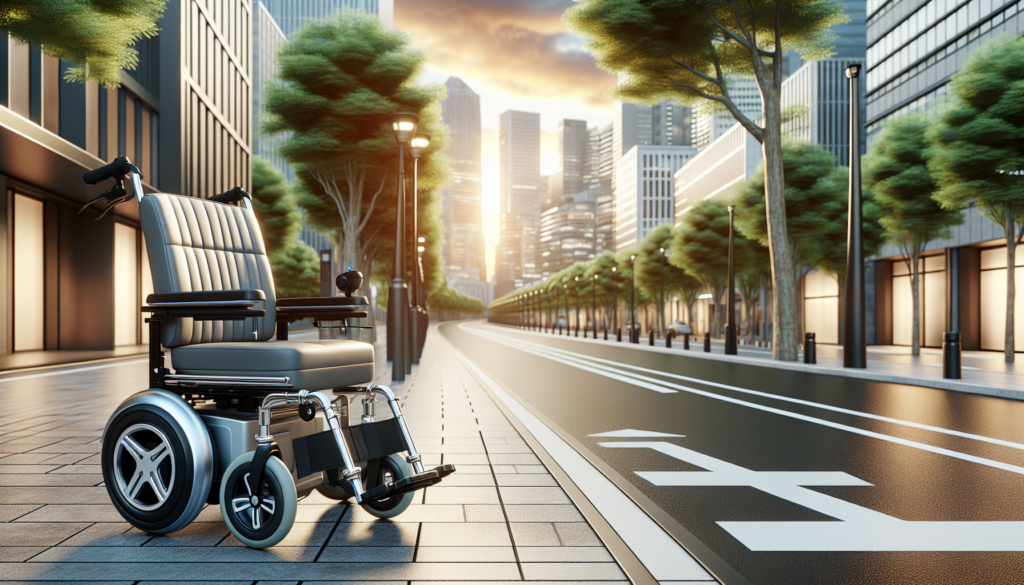
In Malaysia, the integration of electric wheelchairs into public transport systems remains a crucial yet overlooked aspect of accessibility. Many individuals who rely on electric wheelchairs face significant barriers when navigating public transport options, which limits their independence and mobility. By transforming our public transport infrastructure and policies, we can create a more inclusive environment that accommodates the needs of electric wheelchair users. This blog by EKO Life MY explores essential changes that can be made to enhance access and usability for all in Malaysia’s bustling transport landscape.
Understanding the Needs of Electric Wheelchair Users
Understanding the needs of electric wheelchair users is crucial when transforming public transport in Malaysia. Many individuals who rely on electric wheelchairs face significant challenges in navigating existing transport systems that are not designed with their requirements in mind. High steps, narrow doorways, and lack of designated spaces on buses and trains can create barriers that discourage the use of public transport. Ensuring that transport options are safe and convenient for these users must involve consultations with them directly, helping transport authorities better understand the unique difficulties faced by individuals who depend on electric wheelchairs.
These needs include smoother boarding processes, more accessible pathways, and adequate training for staff to assist passengers with disabilities effectively. To create an inclusive environment, public transport services in Malaysia must embrace universal design principles in their infrastructure. Upgrading bus stops with ramps, installing elevators in train stations, and ensuring that all vehicles are equipped with sufficient space to accommodate electric wheelchairs are critical steps to enhance accessibility.
Additionally, user-friendly information systems should be implemented, allowing electric wheelchair users to plan their journeys seamlessly without fear of encountering obstacles. Addressing these core issues will not only empower wheelchair users but also promote a culture of inclusivity within Malaysia’s public transportation system, ultimately encouraging more people to utilize these services confidently.
Current State of Public Transport Accessibility in Malaysia
The current state of public transport accessibility in Malaysia presents significant challenges for electric wheelchair users. While the government has initiated improvements, many public transport systems remain ill-equipped to cater to individuals with mobility impairments. Buses often lack low-floor designs or proper ramps, making it difficult for wheelchair users to board. Moreover, MRT and LRT stations seldom feature escalators or lifts, which restrict access. This inadequate infrastructure not only hampers the independence of electric wheelchair users but also perpetuates social isolation, limiting their ability to engage actively within their communities.
To create a more inclusive public transport system, Malaysia must prioritize the needs of electric wheelchair users in its urban planning and transportation policies. Implementing universally accessible designs in all new vehicles and refurbishing existing ones to include dedicated spaces for wheelchairs can drastically improve their usability. Furthermore, training staff to assist passengers with mobility needs could foster a welcoming environment. Adopting such measures would not only enhance the public transport framework but also signify a commitment to a more inclusive society, enabling electric wheelchair users to navigate their cities with ease and confidence.
Innovative Design Solutions for Accessible Transport Vehicles
Innovative design solutions are critical for enhancing accessibility in public transport vehicles, particularly for electric wheelchair users in Malaysia. One effective approach is to incorporate low-floor buses that allow for easy boarding and disembarking. This design can be complemented by automatic ramps that deploy seamlessly, enabling electric wheelchair users to enter and exit without assistance. In addition, vehicles equipped with secure locking systems can ensure that electric wheelchairs are safely fastened during transit, providing peace of mind for users and their families. Emphasizing the importance of user-centered design, public transport authorities can collaborate with stakeholders, including electric wheelchair users, to create vehicles that meet diverse mobility needs.
To further enhance the experience, integrating smart technology can facilitate accessibility in public transport. Including features like real-time tracking apps that provide information on bus locations and anticipated wait times can empower electric wheelchair users to plan their journeys more effectively. Furthermore, signage systems that utilize clear visuals and braille can cater to a broader range of users, including those with visual impairments. By prioritizing innovative design solutions, Malaysia can transform public transport into a more accessible, user-friendly network for electric wheelchair users, encouraging their independence and participation in community life.
Improving Infrastructure: Ramps, Lifts, and Accessible Stations
Improving the infrastructure of public transport in Malaysia is crucial to making it more accessible for electric wheelchair users. One of the significant changes that can be implemented is the installation of ramps and lifts at all train stations and bus stops. Currently, many stations and transport hubs lack proper facilities, making it challenging for electric wheelchair users to navigate through them. Ramps should be built at all entry and exit points, while lifts must be maintained to ensure they are functional and available for those who need them.
Additionally, clear signage that indicates accessible routes can significantly enhance the travel experience for electric wheelchair users, allowing them to plan their journey more effectively. Furthermore, the design of public transport vehicles also warrants attention. Buses and trains should be equipped with dedicated spaces for electric wheelchairs, along with safety features like securement systems to ensure a safe ride. Moreover, training public transport staff to provide assistance and understand the needs of electric wheelchair users can foster a more inclusive environment. By prioritizing these infrastructure improvements, Malaysia can pave the way for a more accessible and user-friendly public transport system that accommodates the needs of all citizens, particularly those relying on electric wheelchairs.
Enhancing Staff Training for Better Support
Enhancing staff training is a crucial step towards making public transport in Malaysia more accessible for electric wheelchair users. Staff members should undergo comprehensive training programs that educate them on the specific needs and challenges faced by individuals using electric wheelchairs. This includes understanding how to assist passengers in boarding and disembarking safely, guiding them through the transport system, and maintaining a respectful and supportive attitude. By fostering a culture of inclusivity and awareness among staff, public transport services can create a more welcoming environment for all travelers, particularly those who rely on electric wheelchairs.
Furthermore, regular workshops and seminars can be organized for transport personnel to stay updated on the latest accessibility guidelines and technologies. This approach will not only enhance their skills but also empower them to actively participate in improving service quality. Feedback mechanisms should also be established, allowing electric wheelchair users to voice their experiences and suggestions for staff improvement. Ultimately, enhancing staff training is vital in fostering a positive travel experience and ensuring that electric wheelchair users feel confident and supported while navigating Malaysia’s public transport system.
Incorporating Technology for Navigation and Assistance

Incorporating advanced technology into public transport systems is crucial for enhancing accessibility for electric wheelchair users in Malaysia. By developing mobile applications that integrate real-time navigation assistance, users can easily find accessible routes, check the availability of facilities, and receive timely updates on transport schedules. These applications could feature detailed maps highlighting wheelchair-friendly stations, vehicles equipped with ramps, and even provide information regarding the proximity of services for those needing extra help. With these advancements, electric wheelchair users can enjoy greater independence, reducing the anxiety often associated with traveling in a public transport system that hasn’t always catered to their needs.
Moreover, implementing technologies such as GPS tracking and automated alerts for transport staff about the arrival of electric wheelchair users can greatly enhance the overall travel experience. This can ensure timely assistance at stations, helping users transition between different modes of transport with ease. By utilizing AI and machine learning, transport systems can also analyze patterns of usage among electric wheelchair users to identify areas of improvement, ensuring that future developments are tailored to actual needs. In this way, public transport in Malaysia can become not only more accessible but also more efficient and user-friendly for everyone reliant on electric wheelchairs.
Collaborative Efforts: Involving the Community and Stakeholders
Transforming public transport in Malaysia to be more accessible for electric wheelchair users requires a concerted effort from various community stakeholders, including local governments, disability advocacy groups, and transport operators. By collaborating on initiatives that prioritize accessibility, these groups can identify the specific needs of electric wheelchair users, such as ramps and wheelchair spaces on buses and trains. Workshops and community forums can also be organized to gather feedback directly from those who rely on electric wheelchairs, ensuring that their voices shape the policies and infrastructure changes.
These grassroots movements would not only help in creating awareness among stakeholders but also foster a sense of community ownership in making public transport a more inclusive mode of travel. The collaboration should also extend to private sectors and technology firms that can contribute to innovative solutions tailored for electric wheelchair users. Partnering with tech companies can lead to the development of apps that provide real-time information on accessible transport services, enabling users to plan their journeys more efficiently.
Furthermore, investment in training programs for transport staff to assist electric wheelchair users can greatly improve their experience. By building a network of support and resources through collaborative efforts, Malaysia can pave the way for a transit system that embraces inclusivity and ensures equal access for all individuals, regardless of their mobility challenges.
Policy Recommendations for Lasting Change
To enhance accessibility for electric wheelchair users, it is essential for Malaysian policymakers to introduce comprehensive regulations that prioritize the needs of individuals with disabilities in the planning and operation of public transportation systems. These regulations should mandate the installation of ramps and lifts in all public transport platforms, ensuring that electric wheelchair users can easily board and disembark from buses, trains, and other vehicles. Additionally, providing dedicated parking spaces and safe, barrier-free routes to transport hubs will make travel more convenient for these users, addressing the obstacles they frequently encounter in their journeys.
Furthermore, ongoing training programs for transport staff can significantly improve the quality of service for electric wheelchair users. By educating employees about the specific needs and challenges faced by these individuals, personnel can offer better assistance and understanding. Including user feedback in the decision-making process is also crucial, as it helps to identify specific barriers that users experience, allowing for tailored solutions. Ultimately, a multi-faceted approach that encompasses policy updates, staff training, and user involvement will drive lasting change in Malaysia’s public transport accessibility for electric wheelchair users.
Empowering Mobility: A Vision for Inclusive Public Transport

As Malaysia moves towards a more inclusive society, transforming public transport to accommodate electric wheelchair users is imperative. This requires a comprehensive approach that includes upgrading infrastructure, ensuring accessible ticketing systems, and providing properly trained staff to assist passengers with disabilities. By integrating features such as ramps, wider access points, and designated spaces on transport vehicles, we can significantly enhance mobility for electric wheelchair users, allowing them to navigate urban spaces with greater independence and confidence.
Moreover, fostering public awareness and collaboration among various stakeholders, including the government, transport authorities, and the community, is essential for realizing this vision. Engaging with electric wheelchair users to understand their experiences and needs will result in more personalized and effective solutions. By prioritizing accessibility in public transport planning, Malaysia can set a benchmark for inclusivity and equality, ensuring that every citizen has the ability to travel freely and partake in all aspects of daily life.

I love how you covered everything about the topic with simplicity. Easy to understand.
We’re glad that you found our content easy to understand. At Eko Life Malaysia, we strive to provide valuable information in a clear and accessible manner. We appreciate your positive feedback!
Very engaging post! Learnt a lot and I’ll definitely be back for more.
Thank you so much, Ivan! We’re thrilled to hear that you enjoyed our post and found it informative. If you have any specific topics you’d like us to cover in the future, please don’t hesitate to reach out to us. You can contact us at [email protected] or call us at +60 3-7890 3042. We’d love to hear from you.
Honestly, felt that the post could have gone a lot deeper. Disappointed that it was so fluffy.
We appreciate your honest feedback, Zoe. We understand that you were expecting a more in-depth review, and for that, we apologize. Our goal is to provide helpful and informative content for our community. We’ll take your suggestions into consideration for future posts to better meet your expectations. If you have any further feedback or suggestions, please don’t hesitate to reach out to us at [email protected] or +60 3-7890 3042.